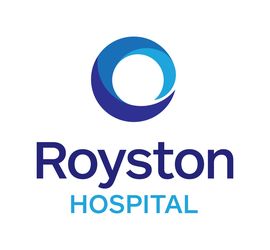Hawke's Bay > Private Hospitals & Specialists >
Royston Hospital - Vascular Surgery
Private Surgical Service, Vascular Surgery
Description
Royston Hospital is the number one provider of private surgical services in the Hawke's Bay region. With highly qualified and experienced specialists and nursing professionals, modern facilities and the latest in equipment and surgical techniques, at Royston you are in great hands.
Private healthcare allows choice, flexibility and access to specialists who use the latest techniques in treatment. You are free to nominate your specialist and can expect your consultation and treatment in a timely manner without waiting list restrictions. Early treatment and intervention is often pivotal in ensuring the best outcome for patients.
Consultants
-
Mr Albert Lo
Vascular & Endovascular Surgeon
Procedures / Treatments
Endovascular therapy: a long thin tube (catheter) is inserted through a small incision (cut) made in the groin in the groin. The catheter is guided to the site of the aneurysm and a graft (synthetic tube) or stent (a metal tube) is put in place to relieve the pressure on the aneurysm. Conventional: an incision is made in the abdomen or chest and the weakened part of the aorta is replaced with a graft.
Endovascular therapy: a long thin tube (catheter) is inserted through a small incision (cut) made in the groin in the groin. The catheter is guided to the site of the aneurysm and a graft (synthetic tube) or stent (a metal tube) is put in place to relieve the pressure on the aneurysm. Conventional: an incision is made in the abdomen or chest and the weakened part of the aorta is replaced with a graft.
Endovascular therapy: a long thin tube (catheter) is inserted through a small incision (cut) made in the groin in the groin. The catheter is guided to the site of the aneurysm and a graft (synthetic tube) or stent (a metal tube) is put in place to relieve the pressure on the aneurysm.
Conventional: an incision is made in the abdomen or chest and the weakened part of the aorta is replaced with a graft.
Carotid Endarterectomy: an incision (cut) is made along the side of the neck, the carotid artery opened and the fatty material (plaque) removed. The artery is closed with a patch. Minimally invasive: a long thin tube (catheter) is inserted through a small incision made in the groin. The catheter is guided to the carotid artery where a balloon attached to the catheter is inflated to clear the blockage or a small metal tube (stent) is put in place to hold the blood vessel open.
Carotid Endarterectomy: an incision (cut) is made along the side of the neck, the carotid artery opened and the fatty material (plaque) removed. The artery is closed with a patch. Minimally invasive: a long thin tube (catheter) is inserted through a small incision made in the groin. The catheter is guided to the carotid artery where a balloon attached to the catheter is inflated to clear the blockage or a small metal tube (stent) is put in place to hold the blood vessel open.
Carotid Endarterectomy: an incision (cut) is made along the side of the neck, the carotid artery opened and the fatty material (plaque) removed. The artery is closed with a patch.
Minimally invasive: a long thin tube (catheter) is inserted through a small incision made in the groin. The catheter is guided to the carotid artery where a balloon attached to the catheter is inflated to clear the blockage or a small metal tube (stent) is put in place to hold the blood vessel open.
Balloon Angioplasty: a long thin tube (catheter) with a tiny balloon attached to the tip is inserted through a small incision (cut) made over an artery in your arm or groin. The catheter is guided through the arteries to the site of the blockage where the balloon is inflated to clear the blockage and, in some cases, a metal tube (stent) is inserted into the artery to keep it open. Endarterectomy: incisions are made in the affected limb and artery and the fatty material (plaque) in the blood vessel is removed. Bypass Surgery: a piece of a vein from another part of the body or a tube made of synthetic material (graft) is used to join the artery above and below the narrowed or blocked section. This creates a detour and a new path for the blood to flow around the blocked segment.
Balloon Angioplasty: a long thin tube (catheter) with a tiny balloon attached to the tip is inserted through a small incision (cut) made over an artery in your arm or groin. The catheter is guided through the arteries to the site of the blockage where the balloon is inflated to clear the blockage and, in some cases, a metal tube (stent) is inserted into the artery to keep it open. Endarterectomy: incisions are made in the affected limb and artery and the fatty material (plaque) in the blood vessel is removed. Bypass Surgery: a piece of a vein from another part of the body or a tube made of synthetic material (graft) is used to join the artery above and below the narrowed or blocked section. This creates a detour and a new path for the blood to flow around the blocked segment.
Balloon Angioplasty: a long thin tube (catheter) with a tiny balloon attached to the tip is inserted through a small incision (cut) made over an artery in your arm or groin. The catheter is guided through the arteries to the site of the blockage where the balloon is inflated to clear the blockage and, in some cases, a metal tube (stent) is inserted into the artery to keep it open.
Endarterectomy: incisions are made in the affected limb and artery and the fatty material (plaque) in the blood vessel is removed.
Bypass Surgery: a piece of a vein from another part of the body or a tube made of synthetic material (graft) is used to join the artery above and below the narrowed or blocked section. This creates a detour and a new path for the blood to flow around the blocked segment.
Sclerotherapy: a tiny needle is used to inject a chemical solution into the vein that causes the vein to collapse. This approach is recommended for small varicose veins only. Vein stripping: the varicose veins are cut out and the veins that branch off them are tied off. The cuts (incisions) made in the skin are closed with sutures. Phlebectomy: small cuts (incisions) are made in the leg and the varicose veins are pulled out with a tiny hook-like instrument. The cuts are closed with tape rather than sutures and, once healed, are almost invisible.
Sclerotherapy: a tiny needle is used to inject a chemical solution into the vein that causes the vein to collapse. This approach is recommended for small varicose veins only. Vein stripping: the varicose veins are cut out and the veins that branch off them are tied off. The cuts (incisions) made in the skin are closed with sutures. Phlebectomy: small cuts (incisions) are made in the leg and the varicose veins are pulled out with a tiny hook-like instrument. The cuts are closed with tape rather than sutures and, once healed, are almost invisible.
Sclerotherapy: a tiny needle is used to inject a chemical solution into the vein that causes the vein to collapse. This approach is recommended for small varicose veins only.
Vein stripping: the varicose veins are cut out and the veins that branch off them are tied off. The cuts (incisions) made in the skin are closed with sutures.
Phlebectomy: small cuts (incisions) are made in the leg and the varicose veins are pulled out with a tiny hook-like instrument. The cuts are closed with tape rather than sutures and, once healed, are almost invisible.
Visiting Hours
Daily 1:00pm to 6:00pm
Refreshments
Complimentary tea and coffee are available in the reception foyer.
Parking
An area is available at the front of the hospital for dropping off and picking up patients, and a large car parking area is located opposite the hospital entrance in Prospect Road, with entry from either Southland or Prospect Road.
Pharmacy
Nearest pharmacy here
Website
Contact Details
Royston Hospital
Hawke's Bay
-
Phone
(06) 873 1111 Extension 0
-
Fax
(06) 873 1112
Email
Website
500 Southland Road
Raureka
Hastings 4122
Street Address
500 Southland Road
Raureka
Hastings 4122
Postal Address
500 Southland Road
Hastings 4122
Was this page helpful?
This page was last updated at 9:53AM on June 21, 2024. This information is reviewed and edited by Royston Hospital - Vascular Surgery.

